
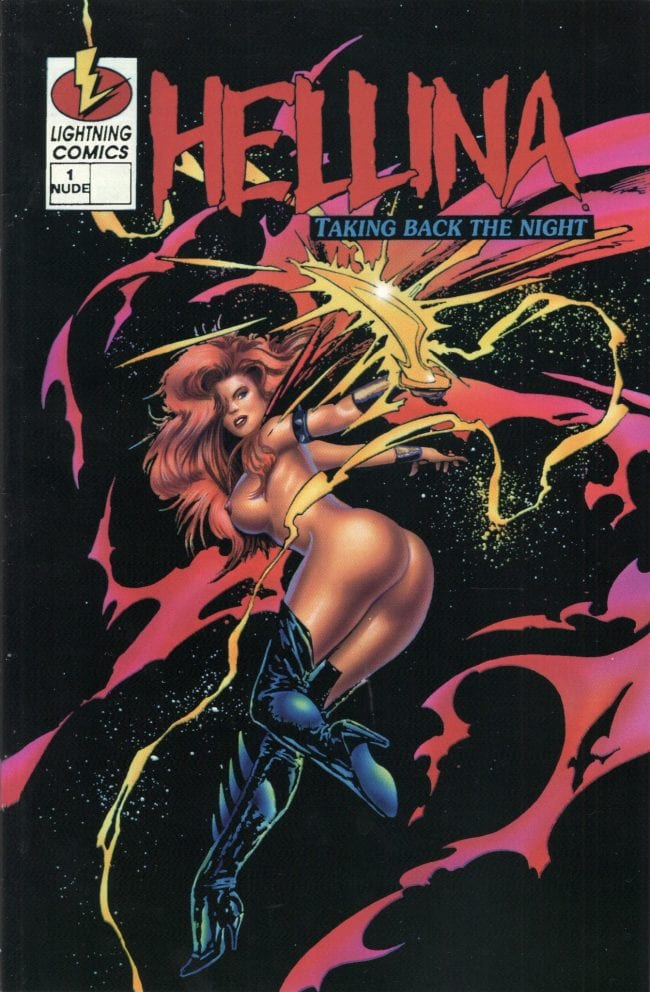
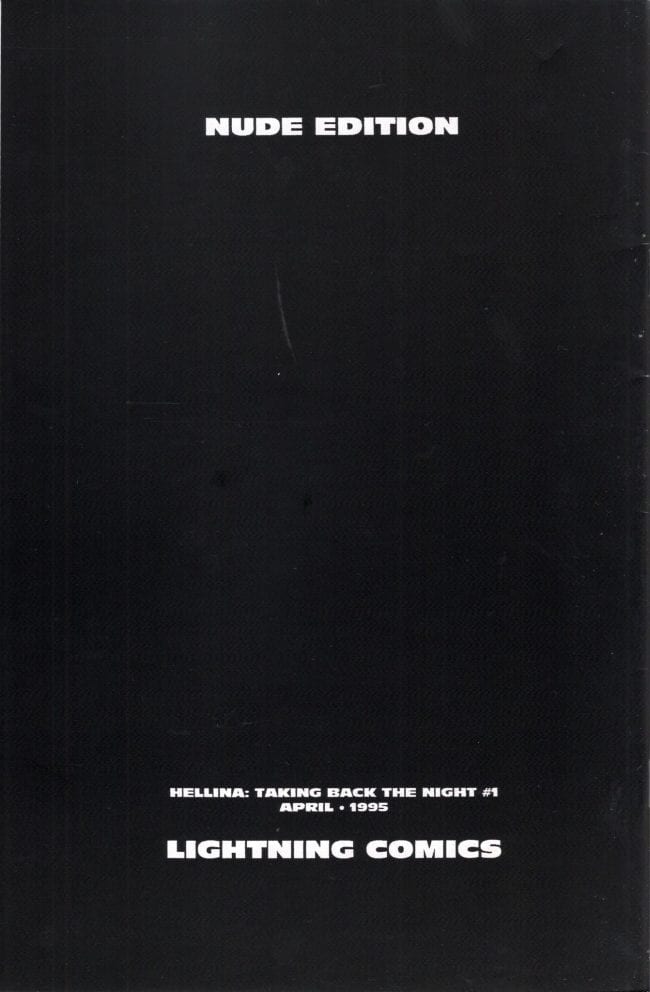


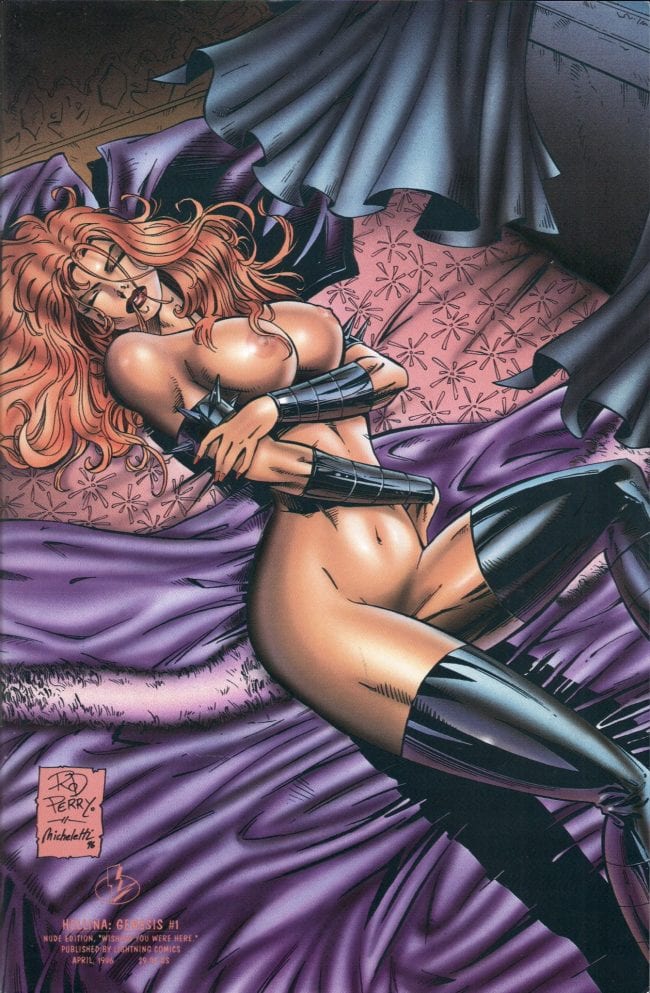

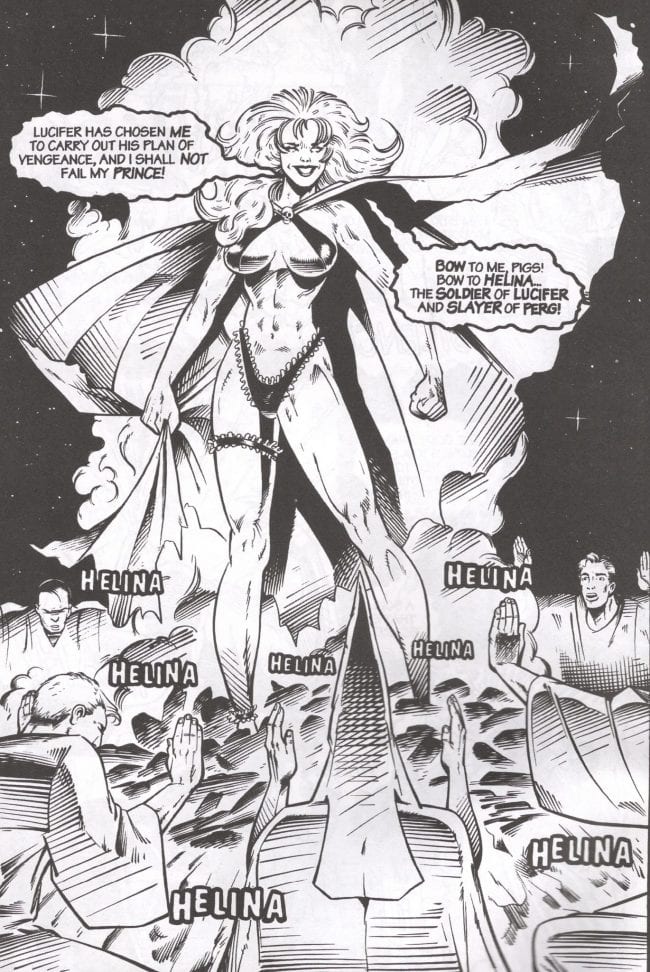
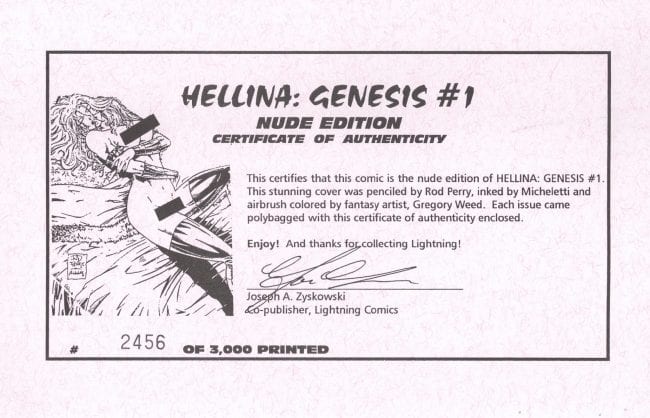

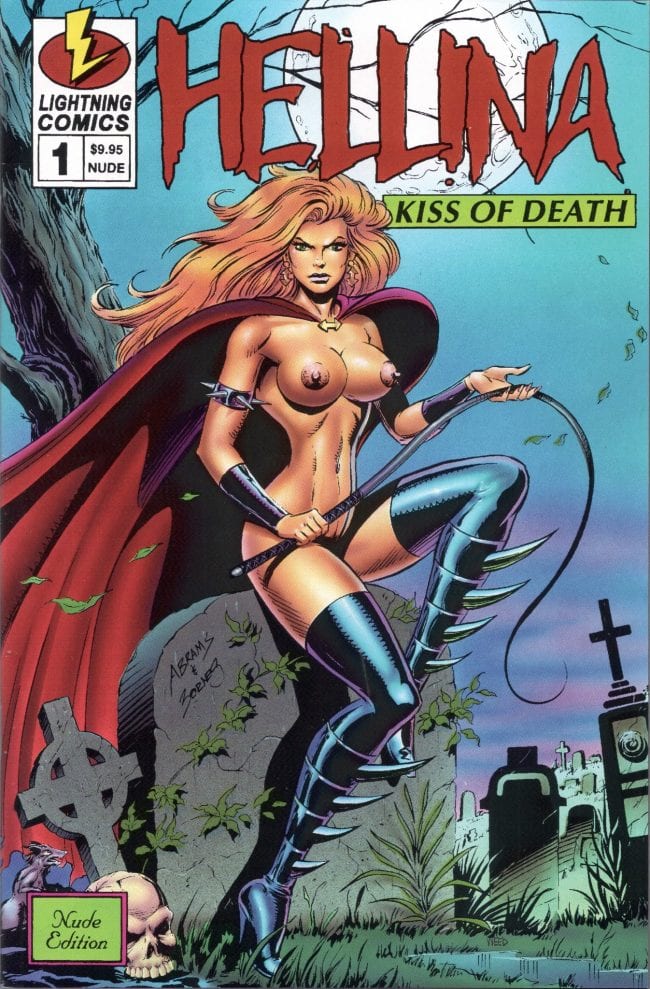
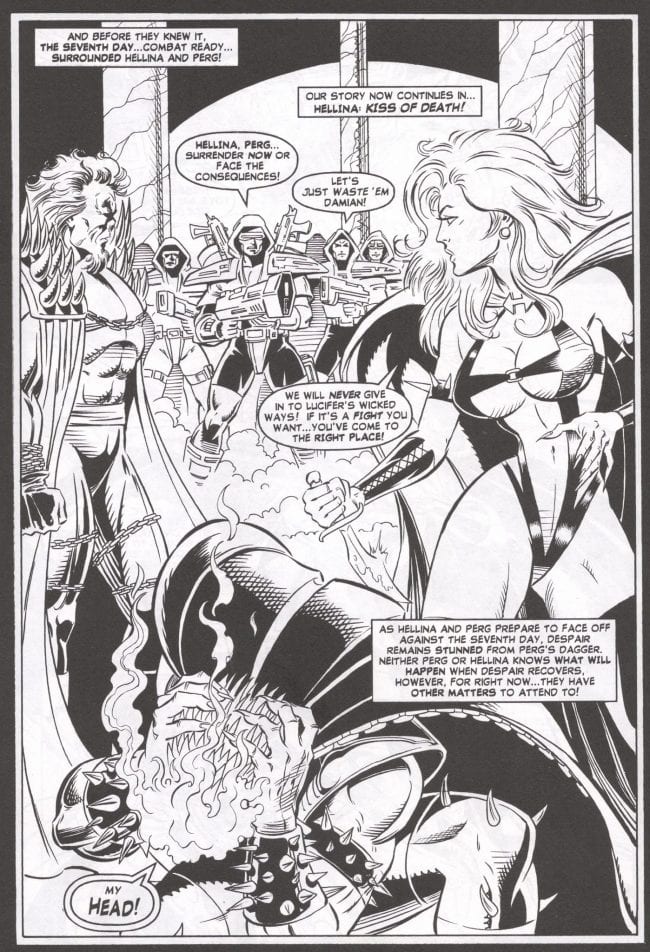








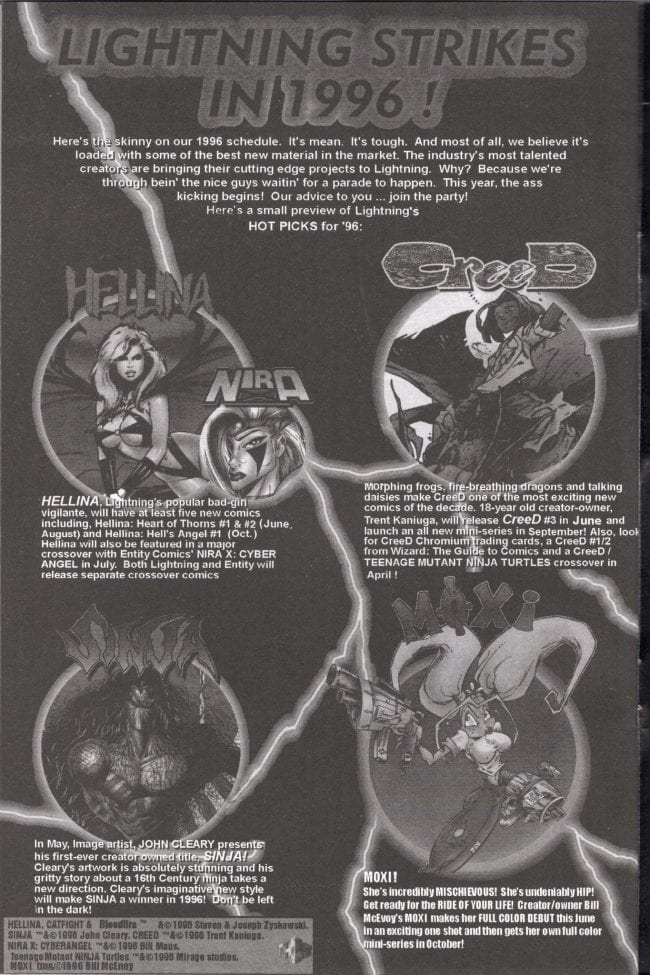









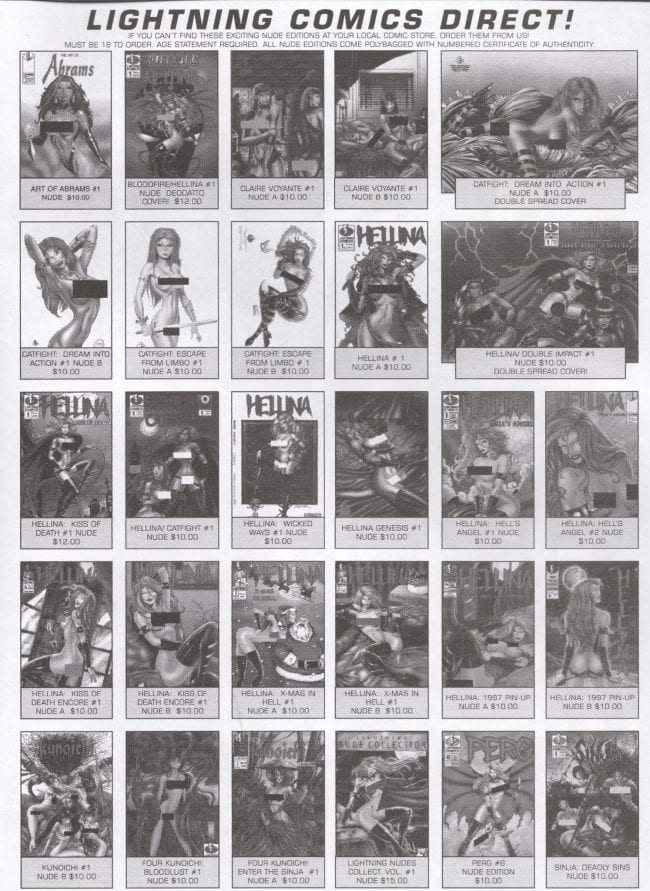

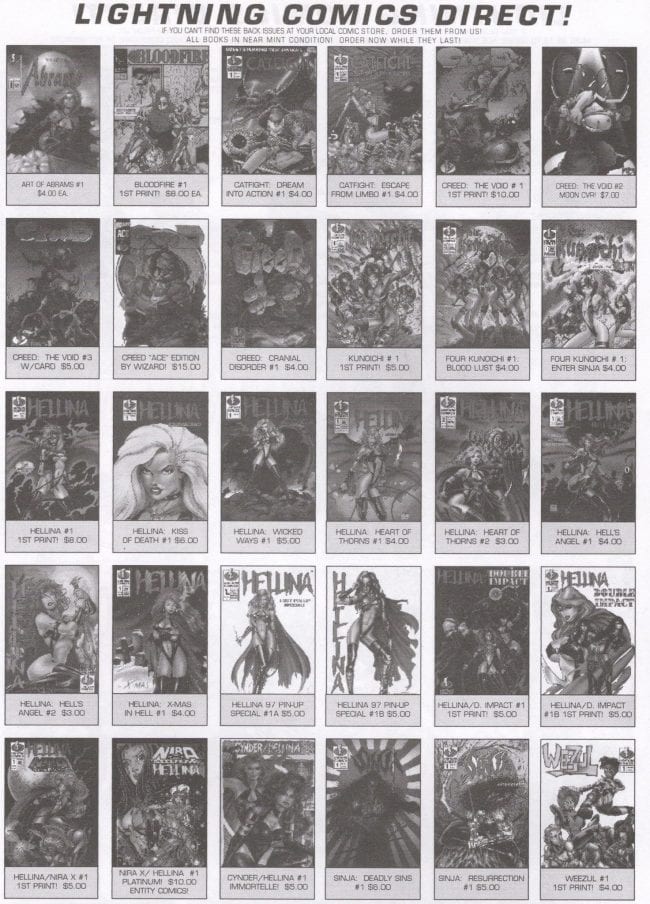
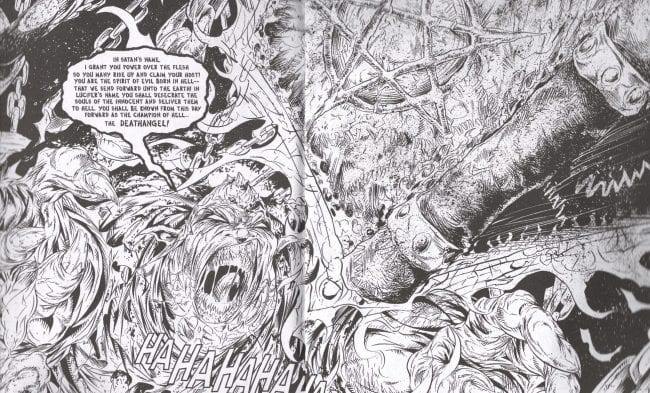



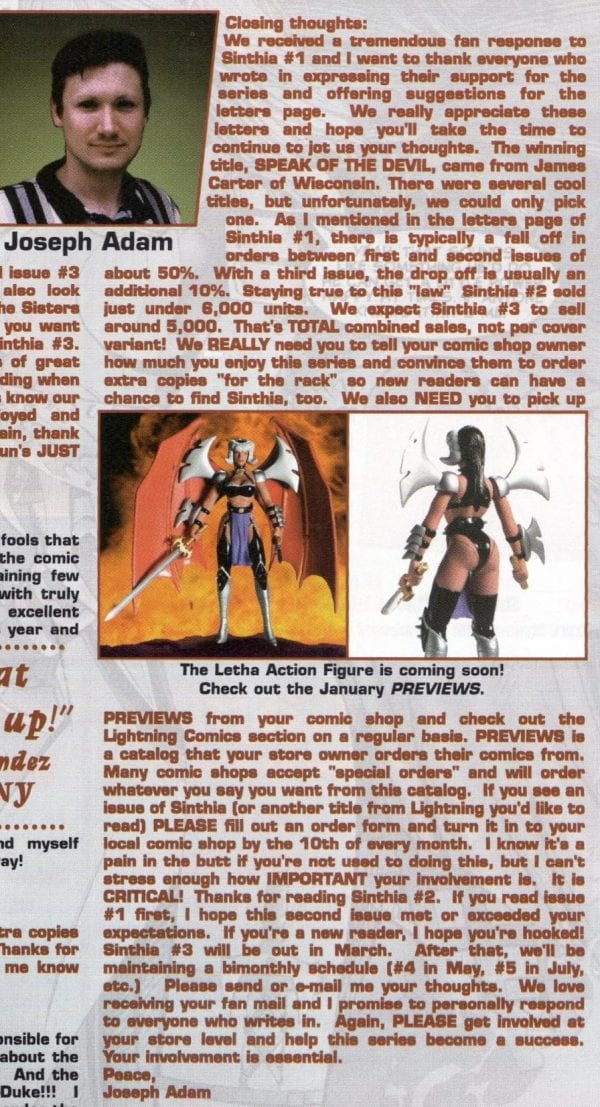



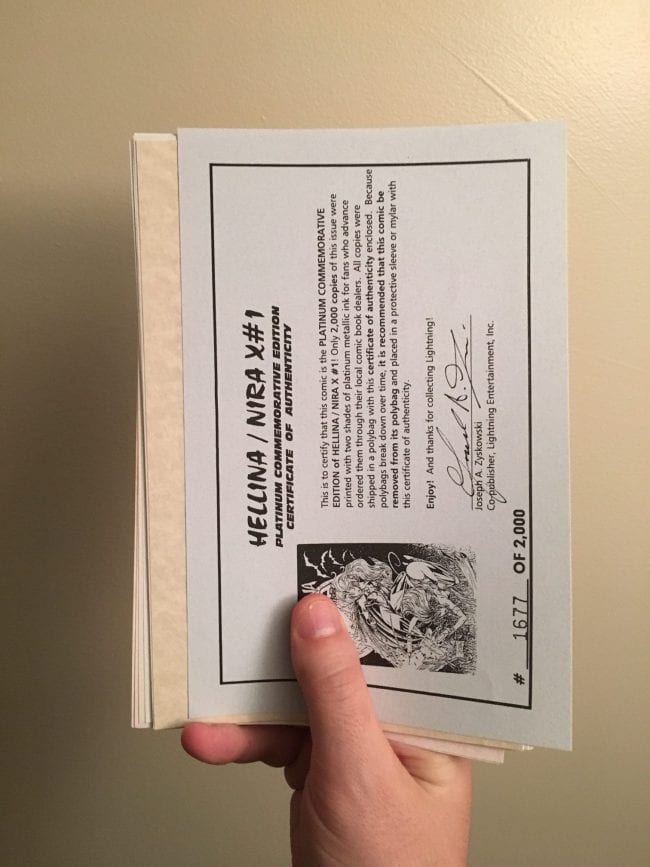
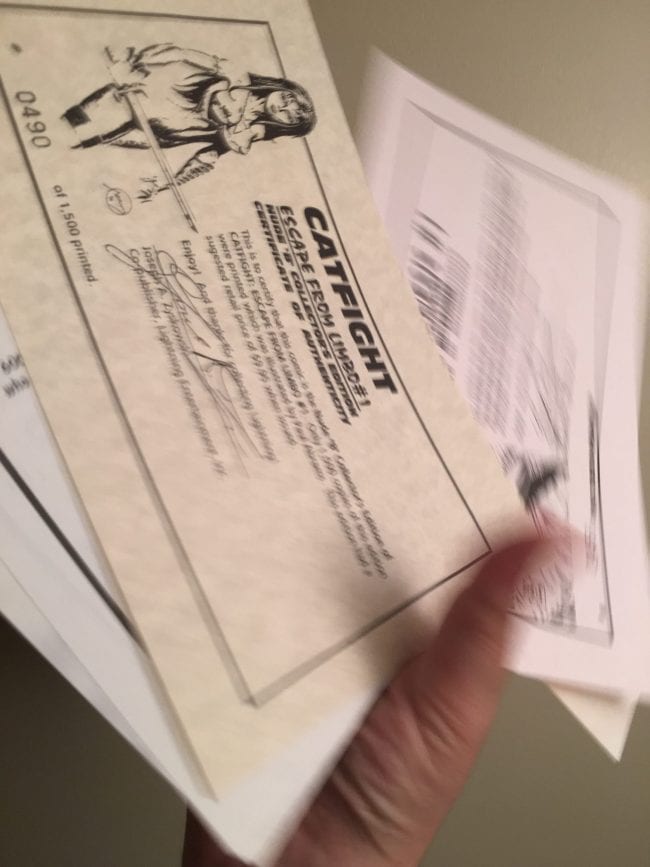

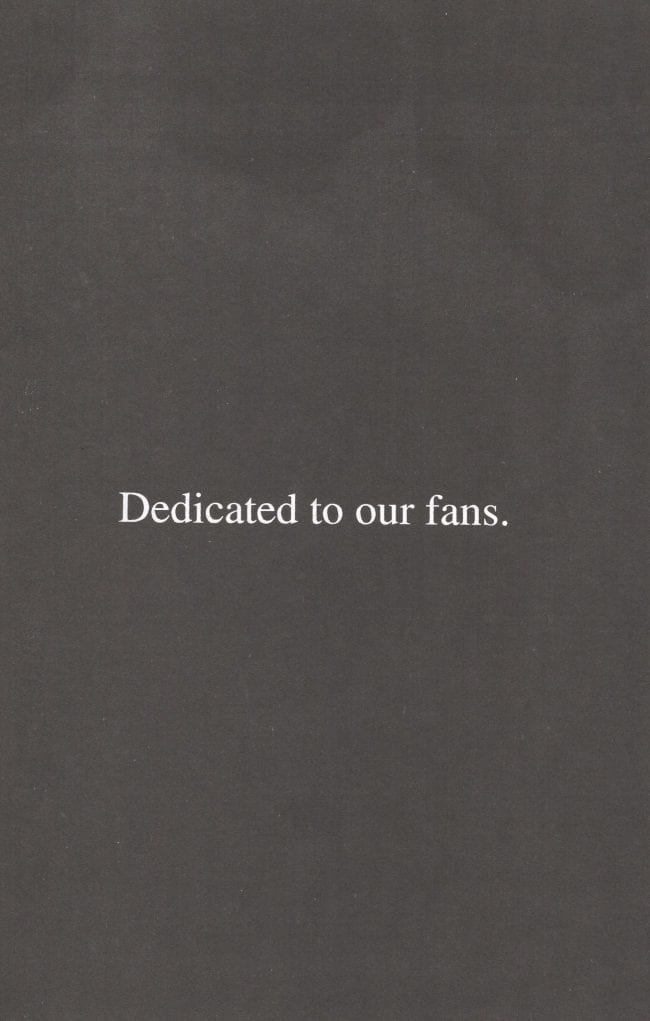
***
I was reading Robin Snyder's newsletter, The Comics!, and I came across a letter from an artist and editor of a comics magazine from years ago. He was suffering from ill health, and had gone into assisted living. He had dvds to watch, and some collections of old comics to read, but he didn't think he could travel anymore, as he'd often liked to do. What we are given when we are young, he wrote, is taken when we are old. Elsewhere in the newsletter it was written that the correspondent had died only months after the letter was sent. Eager to learn more about the man's work, I googled his name; the first hit was a Wikipedia page, which insisted he was still alive. Presumably, nobody editing Wikipedia had noticed he was dead. It was sad, these circumstances - sad a little. But what is sadder, I know, is the placing of my faith as an observer in the idea of technological platforms as an arbiter of reality, and a means, thereby, to guess at preeminence. To gauge existence, subconsciously, as a sport of scramble over obscurity; to gamify your words as appealing and unappealing. God, to trust that you will be memorialized beyond the tangibles of love known to you. This chimera of becoming visible - and trusting, thus, in the zookeepers shoveling its shit.
***
Hellina: Taking Back the Night #1 (Nude): Not too long ago, I purchased a 40-item lot of Lightning Comics publications off eBay for $40.00. Adding $10.00 for shipping, the comics averaged out to a buck and a quarter each. "These are really cool books," the seller messaged me, while in the process of correcting his listing to specify exactly which comics would be duplicate issues with different variant covers. There were a *lot* of variant covers, including a great deal of "nude" variants, with certificates of authenticity and everything. I was especially excited to get a hold of the nude variant to Hellina: Taking Back the Night #1 (there was no #2), which I understood to be the first in U.S. comics history. Of course, a nude variant is a variant cover in which a character appears nude, when they normally would not, for the purposes of attracting sales. At the time of its release, this comic went for ten bucks. The nude cover was drawn by S. Clarke Hawbaker, an illustrator with some Marvel credits to his name by then (notably the Fabian Nicieza-written series Nomad), and colored by Greg Weed, who would work very extensively at Lightning in that capacity for much of the company's five-year life. April, 1995; $1.25.
Hellina: Genesis #1 (Nude): Lighting had actually begun with a line of color comics in 1993 -- all of them superhero-and-adjacent titles faintly reminiscent of those wares made legend by the Image revolution -- but low sales crippled their ambitions until learned to pin their hopes on Hellina, a Lady Death-type 'bad girl' character introduced as an antagonist for Perg(as-in-'atory'), an occult superhero whose gimmick was that he would stab people in the head, but instead of killing them he would drive out the evil from their being, leaving them as virtuous beings. He commands, in this way, splinters of the forgiveness of God. Hellina was introduced in Perg #4 (Jan. '94), written by Joseph A. Zyskowski, Lightning frontman and co-owner of the character with his brother, Steven V. Zyskowski. The artist was one Terral Lawrence (inked by David Mowry & Patricia Laskowski), who also pencilled the aforementioned Taking Back the Night. He would not remain associated with the character for much longer than that, and indeed seems to have vanished from print comics entirely after 1997, although I can't account for minicomics or ultra-small press work. By that point Steven V. Zyskowski had become the character's regular writer, and answerer of various letters column queries. For the record, Taking Back the Night was the *third* Hellina one-shot, following plain vanilla Hellina (Sept. '94) and The Fury of Hellina (Jan. '95). Hellina: Genesis was a collection of the character's Perg appearances published a while later, with a by-then-obligatory nude variant, drawn by Rod Perry, inked by Rene Micheletti, airbrushed by Greg Weed, and again cover priced at nine ninety-five. April, 1996; $1.25.
--
Hellina: Kiss of Death #1 (Nude): The 'primary' artist on the Hellina comics, in terms of basic longevity, was Paul Abrams, a Direct Market-era journeyman who got his start in Heavy Metal magazine and did a few scattered Marvel gigs along with a run on First Comics' The Badger, among many other assignments. Abrams had also drawn some of the Perg material in which Hellina figured, and his rather classically winsome superheroine approach clicked very well with the Lightning mission. Nude covers aside (and Abrams himself drew that of Kiss of Death, inked by Gary Barnes and colored by Greg Weed), these were very conservative, bleep-the-curse-words cape comics, more than a little square in the face of Image fare; forget about the aggro likes of Faust and The Crow, or even the mall fountain provocations of Evil Ernie - Lightning had their eye on what was still known then as the comics mainstream, and while Hellina may appear undressed on the cover, it was like the reverse of a men's magazine in a brown paper bag. Here, the overt sex was the come-on, while the actual comic was as placid and inoffensive as the Marvel team-ups that S. Zyskowski's writing could sometimes evoke. The cops would never bust this shit. These were good boys. July, 1995; $1.25.
Hellina/Catfight #1 (Nude): It's for good reason that few remember these comics. They're never especially good as storytelling units, and absolutely awful at building in any sort of direction; momentum can salvage a superhero serial even if individual issues fall flat, at least in the mind of a charitable audience, but Hellina-the-never-really-a-series couldn't ever seem to overcome the original sin of her launch as a title character, i.e. that Lightning had solicited an unproduced book as a Hail Mary pass, trusting entirely in the 'bad girl' audience to reciprocate their gestures of support. It worked, but nobody seemed to know what the fuck to do with Hellina, besides having her fight cults, or sometimes weird creatures, or biblical-type villains. Perg showed up a lot, like an Adam Sandler buddy in a Happy Madison film. Really, though, Hellina functioned nearly as a simulacra of a character, powered by the forces of the market. Never, never ever did a Hellina 'series' exceed two issues, presumably because #1 issues always sold better. Variants and their forced scarcity nagged at the desires of collectors. Team-ups with other company's like-minded properties were also a good idea, though 'Catfight' was actually introduced in an earlier Hellina comic, leaving the prospect of a crossover unique only as a matter of titular fiat. Abrams pencils, Barnes inks. October, 1995; $1.25.
Catfight: Dream Into Action #1 (Nude a): Copyright and trademark Steven V. Zyskowski, Catfight (yes, that's the character's name) was initially meant as a means of launching a Lightning imprint called Insomnia Press, geared toward non-superhero works. Given that Catfight is a lady with powers and a costume who hits evil until it stops, you might wonder how this is not a superhero book; please remember, though, that the superhero scene was rife with hair-splitting as to what was and was not true genre material back in those imperial years. More disquieting is the premise of the title: Catfight is the dream realm adult alter ego of a sixth-grade girl, which seems like a innocuous enough idea until you catch on to the slight state of her costume, and you realize, moreover, that *this* character gets nude variants as well. The implications of this scheme are never discussed on the Catfight letters page, so I will presume that the Lightning crew just trusted in the same marketing mechanisms as they always did. Of course superheroines dress like this. Of course showing them naked on a ten dollar variant cover is good business, the customers love it! All this stuff is kind of the same, you know? It's stuff. Fun stuff. We're not curing cancer here. It's fun. MULTIPLE nude variants exist for the third Catfight special, Dream Into Action, and the one I got was drawn by a young man named John Cleary, whose own title, Sinja, was advertised in that issue for imminent release. March, 1996; $1.25.
Sinja: Deadly Sins #1 (cover b): There are two defining characteristics of Sinja, written and drawn by John Cleary (and colored by Greg Weed), co-written and co-owned by his brother Tim, one of a wave of creator-owned titles that plumped up the Lightning line in '96. First, it is a breakneck race through seemingly a dozen issues' worth of backstory and premise and lore, barely even beginning its main story by the time the issue is done; there is no clearer sign of an unguided passion project, wriggling into being almost guilty with the understanding that its artist can't possibly narrate all the stuff he'd planned in detail, so everything is instead signaled. Second, its back pages afford Cleary the space to not only introduce himself but summarize the entire trajectory of his career up until then: his startup at Topps Comics; the call he got from his hero, Todd McFarlane, to draw Boof at Image; the DC, Malibu and sundry Image works that followed. A handful of East Asian-themed comics like this would later arrive from Cleary, who became more and more prominent a presence in Lightning's titles as it moved rapidly toward oblivion. June, 1996; $1.25.
Faith #1 (cover a): Or should I say Apocalypse? One thing you come to understand about Lightning's comics once you read everything in a 40-piece box is that there's a religious strain running through the line, from Perg's salvation-via-stabbing gimmick to Faith, an angelic heroine book drawn by John Cleary (with inking for pages set in the Earthly realm by David Mowry; hope you're noticing how the same names keep recurring), and written by "Steven Vincent", aka Steven V. Zyskowski, who inadvertently(?) leaves his full name in the email address listed in the back pages for letter-writing purposes. I don't know anything about Mr. Vincent's faith, but as a former altar boy I can't help but see this crypto-pseudonym as the window between priest and penitent, with the confessing taking the form of a detailed breakdown of the title's precarious financial situation, its fate nearly sealed by low pre-orders before it could even hit the stands. There were two covers, no nudes; I got both in my grabbag, and I prefer the angelic/demonic love/hate setup of Steve Firchow's wraparound. He did a lot of stuff with Top Cow under the Image banner. Faith never saw a second issue. July, 1997; $1.25.
Hellina: In the Flesh #1 (cover b): Hellina, as you might have guessed, continued until the bitter end. There were experiments with new writers, including a single-issue bid by Christina Z, then popular on Image's Witchblade, but nothing lasted save for Paul Abrams, who by In the Flesh (the latest-dated of the comics in my bargain bulk package) was no longer working with inkers, or indeed any inks. This was sold as a 'darker' look for the character, though I wonder if by this point Lightning just didn't want to spend money on inking anymore. The Hellina character was eventually purchased by Avatar Press, which continues to prominently exploit her today in a series of tongue-in-cheek 'adult' superheroine comics with a level of XXX-rated explicitness unimaginable from the placid capitalists of Lightning. Some remaining Lightning holdings resurfaced online along with Steven V. Zyskowski a few years back, but nothing much seem to have come of it. Paul Abrams remains active as an artist, working primarily in fine art painting and fantasy commissions. August, 1997; $1.25.
Deathangel #1 (cover a): Toward the end, John Cleary explored total control in a series of one-off comics that Lightning released in b&w; he'd do everything but the lettering, and his drawing took on an increasingly unrestrained quality, steering firmly at times into the influence of McFarlane. By this point, the Lightning logo had been redesigned so that it could quite easily be mistaken for the Image 'i' - as if browsers might be tricked into assuming they'd found some heretofore unknown sub-imprint. Maybe a last-ditch effort; none of these comics seem to even contemplate continuing after their debut anymore. Cleary did not apparently continue his comics career after the end of Lightning, and now works prolifically as a sculptor for collectable statues and toys. December, 1997; $1.25.
Sinthia #2: The final item at the bottom of my personal dollar bin is Sinthia... all these sins, man. Second and final issue. There was a Hellina book released the next month (Hellborn #2), and then Lightning was no more. A comedy of a demon lady having fun and getting into trouble in the mortal world, Sinthia strains for the sort of mass acceptance that might be extended to a feature on the USA Network's Up All Night program at that time, complete with a cable-appropriate level of sensuality. Even the nude covers were gone, linewide; did they want to rebuild themselves as a family brand, like they rebuilt themselves as horny lads? Drawn by Rod Perry, written by "Joseph Adam", who, like "Steven Vincent" before him, appears to be a none-too-hidden Joseph A. Zyskowski, although at least Joseph thought to digitally alter his author's photo to a somewhat eerie result. And, like his brother before him, the writer sounds off in the back as to wanting sales and the necessity of pre-ordering, just like you hear on Twitter and Facebook today. I don't want to sound discouraging here. The fact is, I've always empathized with these lost, doomed souls, because that is the lot of the critic. All but the most prominent and lucky. Richard Kyle, Marilyn Bethke, Joe Brancatelli, Carter Scholz. I'm just rattling off names. I remember them, but you can't expect to be remembered. You can fool yourself into thinking you'll be remembered, because you're afraid your work is useless, you're afraid your time is wasted, you're afraid, somewhere, of dying, maybe; I'm positioning me as you, if you'll excuse me. I'm afraid of a lot of things, but a wise man once said it's fine to be afraid so long as you don't let others' fears become your own. I try not to adopt the neuroses encouraged by the use of online platforms, which insist, subconsciously, that you continue to feed, feed, feed these maws of perpetual promotion out of concern that once you stop you'll cease to exist under the din of a million other nimble distractions. But all being popular on Twitter means is that you're good at using Twitter. Not dissimilarly, Lighting Comics was good at using the particulars of the comic book sale machine for a while, but only the big kids get to do this shit forever, because they've been around forever, and theirs is a hegemony of presence. And they can't do it forever, though do it they do. January, 1998; $1.25.
--
The executors of this column invite you to return next week for the final installment of THIS WEEK IN COMICS!






